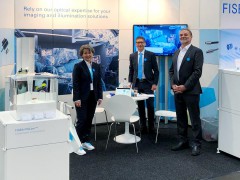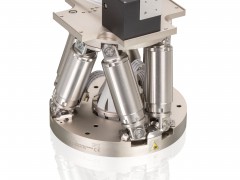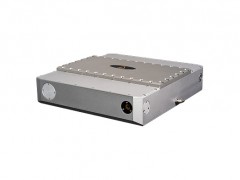
Shanghai Institute of Optics and Fine Mechanics has made progress in research on strong ultra-short
source:Laserfair
release:Nick
keywords: ultra-short laser
Time:2019-01-10
Recently, the State Key Laboratory of Laser Physics of Shanghai Institute of Optics and Fine Mechanics, Chinese Academy of Sciences, has made new progress in the study of ultra-short-short laser-driven plasma Weber instability and strong magnetic field generation.
Magnetic fields are widely present in the evolution of various celestial bodies and celestial bodies. From the surface of the earth 10-5T to the ultra-high magnetic field (108-9T) of the pulsed neutron star, the extremely strong magnetic field plays a very important role in many astrophysical phenomena such as solar flares, gamma ray bursts, supernovae, accretion disks. The use of ultra-strong ultra-short lasers to drive high-temperature and high-density plasmas to generate strong magnetic fields and magnetic reconnections can simulate many astrophysics processes in the laboratory.
In addition, strong magnetic fields have important applications in the fields of inertial confinement fusion, nuclear physics and materials science. At present, laboratory astrophysics research using lasers to drive strong magnetic fields and magnetic reconnections is carried out on large laser devices such as Shenguang and OMEGA. Moreover, most of these physics studies are based on the Weber instability mechanism of ions, and the magnetic field strength obtained is on the order of hundred tesla.
The researchers used a high repetition rate kHz, a few millijoules of femtosecond laser device. By manipulating the pulse sequence to interact with the high-density solid target, an expanded high-temperature dense plasma hemisphere is first generated in the normal direction of the target surface, and then the femtosecond intense laser drives the high-current electron beam to induce the growth of Weber instability in the plasma.
In the experiment, by using time-resolved shadow imaging and Faraday magneto-optical polarization rotation measurement, the periodic distribution of electronic filament structure and the strong magnetic field array with intensity up to thousand Tesla and its evolution process were observed. The peak magnetic field strength is 2 thousand Tesla and lasts 2 picoseconds.
The study reveals that high-energy electron emission from a dense internal plasma region induced by a strong laser induces a nonlinear growth of electron Weber instability, resulting in electronic filament formation of the periodic structure and amplification of the magnetic field. The research results open up a new way to study high energy density physics and experimental astrophysics using miniaturized laser devices, which can further study and understand the nature of magnetic field generation, amplification, magnetic reconnection and celestial phenomena.
- RoboSense is to Produce the First Chinese Multi-beam LiDAR
- China is to Accelerate the Development of Laser Hardening Application
- Han’s Laser Buys Canadian Fiber Specialist CorActive
- SPI Lasers continues it expansion in China, appointing a dedicated Sales Director
- Laser Coating Removal Robot for Aircraft
 FISBA exhibits Customized Solutions for Minimally Invasive Medical Endoscopic Devices at COMPAMED in
FISBA exhibits Customized Solutions for Minimally Invasive Medical Endoscopic Devices at COMPAMED in New Active Alignment System for the Coupling of Photonic Structures to Fiber Arrays
New Active Alignment System for the Coupling of Photonic Structures to Fiber Arrays A new industrial compression module by Amplitude
A new industrial compression module by Amplitude Menhir Photonics Introduces the MENHIR-1550 The Industry's First Turnkey Femtosecond Laser of
Menhir Photonics Introduces the MENHIR-1550 The Industry's First Turnkey Femtosecond Laser of Shenzhen DNE Laser introduced new generation D-FAST cutting machine (12000 W)
more>>
Shenzhen DNE Laser introduced new generation D-FAST cutting machine (12000 W)
more>>
